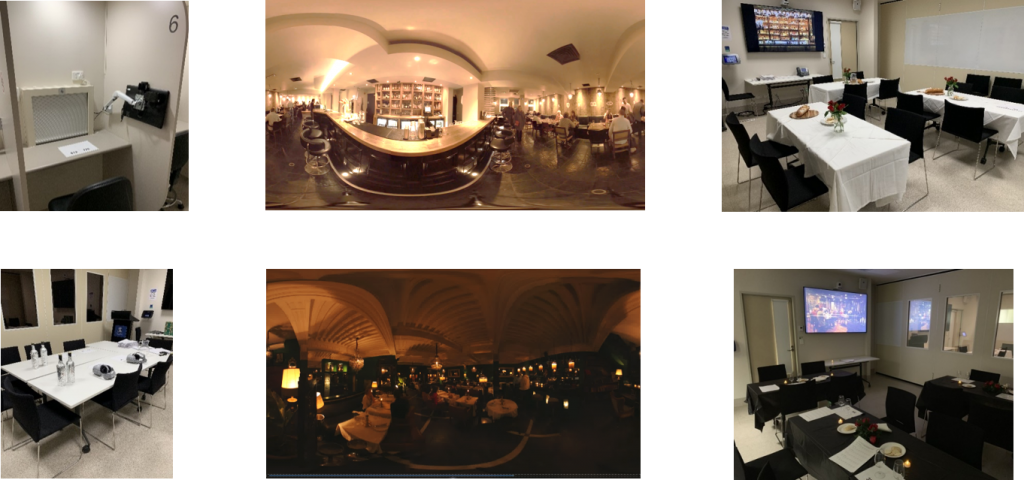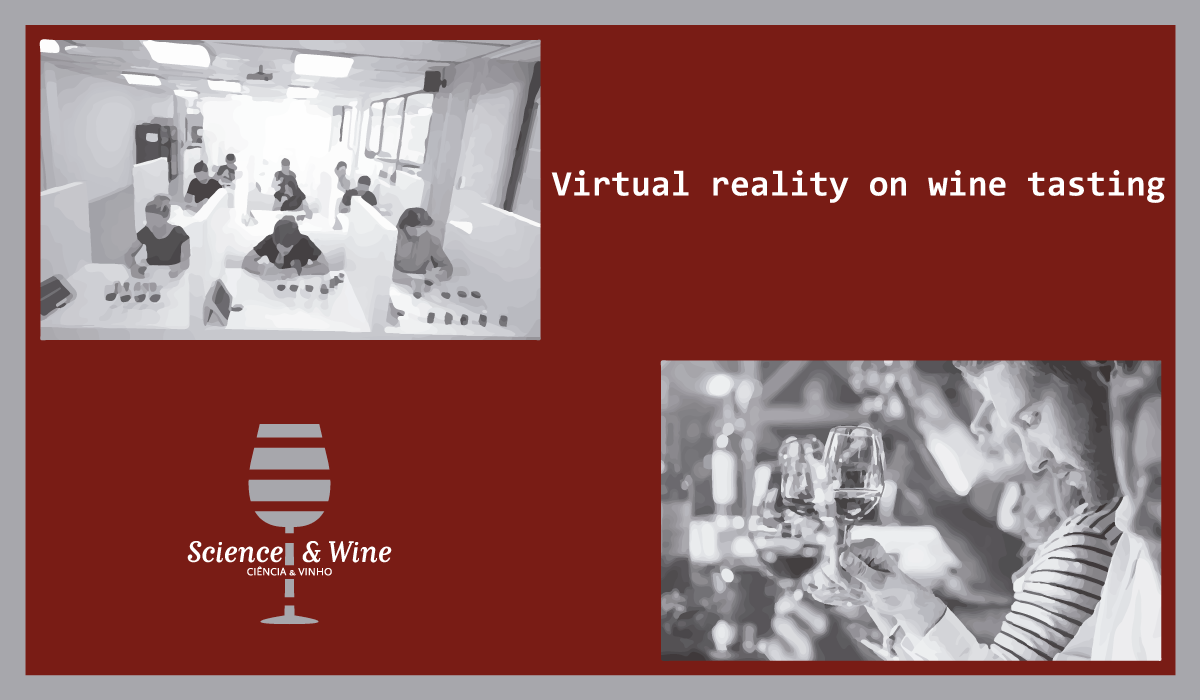by Damir Dennis Torrico
Wine tasting is affected by multiple sensory variables, including the intrinsic (e.g., colour, aroma, flavour, and mouthfeel) and extrinsic (e.g., label, packaging, country of origin, and price) attributes and characteristics of the product. With the overall increasing demand for wine around the world, the production of higher quality and more preferred products is one of the biggest challenges for the wine industry nowadays. Sensory analysis is considered an essential and critical component of the quality assessment in wines. In this regard, typical consumers’ sensory tests rely on using isolated booths for removing external factors, including odours, noises, and visual cues that might affect participants’ decisions and produce biases in the responses. Although it is a standard practice to carry out sensory sessions in controlled environments, these may not reflect the actual consumption atmosphere of consumers, and results from these trials can lack ecological validity, which means that the sensory experience is different compared to “real” consumption situations. In general, wines and their tasting environments are interrelated to constitute the overall sensory experience. Contextual factors such as the location, ambience temperature, humidity, and sound/lighting can affect the liking and preferences of consumers. Collectively, this contextual information is associated with the visual, auditory, olfactory, and gustatory dynamics of the stimuli. Contextual cues can shape the subsequent hedonic and emotional assessment, perception, purchase intention, and other related behaviours exhibited by consumers.
Standard sensory laboratories can be considered unfamiliar environments for the consumption of beverages, where consumers usually are separated in booths and isolated from external factors. In reality, wine tasting is influenced by the environmental factors that affect the senses of consumers. The contextual elements can be multifaceted and changing, which include multiple stimuli that make up the background information of the tasting experience. Complex contextual cues are essential for the formation of subsequent consumers’ behaviours, expectations, emotions, and hedonic evaluations. Besides the sensory properties of products, external factors surrounding consumers can also affect the acceptability and emotional responses.
In this regard, researchers in the sensory field have done some work using real contexts and environments to evaluate the acceptability of products. However, most of these trials can be very expensive, mainly due to the inflexibility of changing the environmental features in given experimental settings. This means that a study can be conducted in a bar (or any other type of environment); however, if the researchers would like to test the same product in a different context, participants will have to move to that location, which can incur in expending additional resources. For this reason, the use of Virtual Reality becomes an efficient solution for testing different environments without requiring the participants to move to different locations. Immersive Virtual Reality (VR) is a computer simulation that situates users or consumers in nearly real environments. VR can be used to generate virtual surroundings and simulate real contextual environments to possibly increase the consumers’ engagement and ecological validity of traditional sensory tests. In a study carried out at the University of Melbourne (https://www.mdpi.com/2304-8158/9/2/191), researchers evaluated the perception, sensory acceptability, and emotional responses of a Cabernet Sauvignon wine under different conditions, including the traditional sensory booths, “real-word” contextual environments, and Virtual Reality simulations with the associated hardware (VR headsets). In this study, participants (N=53) performed tasting evaluations of the same wine (Cabernet Sauvignon) under five conditions (Figure 1): (1) traditional-booths, (2) bright-restaurant [a recreated restaurant environment with bright lights], (3) dark-restaurant [a recreated restaurant environment with dim candles], (4) bright-VR [Virtual Reality restaurant with bright lights], and (5) dark-VR [Virtual Reality restaurant with dim candles]. Participants rated the acceptability of different wine attributes, including aroma, sweetness, acidity, astringency, mouthfeel, aftertaste, and overall liking (using a 9-point hedonic scale), and intensities of sweetness, acidity, and astringency (using a 15-cm unstructured line-scale). Results showed that context (booths real or VR) affected the perception of wine’s floral aroma. In general, the intensity of the wine’s floral aroma was higher in the VR dark restaurant environment (score = 8.6) compared to that of the traditional sensory booths (score = 7.5) (Table 1). On the other hand, the researcher found that the liking of the sensory attributes did not change under the different environmental conditions. Another aspect that can be influenced by the testing environment is the emotions that participants can elicit towards the product during the tasting. In this study, the emotional responses (Figure 2) under the bright-VR condition were associated with “free,” “glad,” and “enthusiastic”; however, under the traditional booths, the wine was related to “polite” and “secure.” “Nostalgic” and “daring” were associated with the dark-VR environment.

1 (a) Traditional sensory booths, (b) VR set up, (c) bright restaurant VR environment, (d) dark restaurant VR environment, (e) bright real restaurant environment, and (f) dark real restaurant environment (source: https://www.mdpi.com/2304-8158/9/2/191).

Overall, this study showed that the environment affected the perceptual and emotional responses of consumers when tasting a wine product. Although liking was marginally affected, the dark-VR environment elicited different emotional reactions compared to those of the traditional booths. The virtual reality technology provides a relatively steady and economical method for sensory evaluation of wines by giving a more realistic consuming environment compared to that of conventional sensory booths.

1Booths = Traditional sensory booths, Bright-real = Bright restaurant real environment, Dark-real = Dark restaurant real environment, Bright-VR = Bright restaurant VR environment, and Dark-VR = Dark restaurant VR environment (source: https://www.mdpi.com/2304-8158/9/2/191).
This communication contains results previously published in:
Torrico, D. D., Han, Y., Sharma, C., Fuentes, S., Gonzalez Viejo, C., & Dunshea, F. R. (2020). Effects of Context and Virtual Reality Environments on the Wine Tasting Experience, Acceptability, and Emotional Responses of Consumers. Foods, 9(2), 191.

Dr. Damir Dennis Torrico is a Senior Lecturer in Sensory Science at Lincoln University, New Zealand. He has a Master and Ph.D. degrees from Louisiana State University in the United States. Before Lincoln, he worked as a Research Fellow in The University of Melbourne, Australia. His teaching and research interests are focused on sensory science in the area of food and beverages. Dr. Torrico is interested in taste perception, food product optimization and consumer acceptability, and physiological and psychological responses of consumers toward food products. In particular, Dr. Torrico explore how the variation in human senses and thinking processes affect the sensory evaluation of foods and beverages, looking at the measurement of liking and disliking of different food products and establishing more accurate sensory protocols. He is also involved in new food product development. His work measures consumer responses towards healthier food/beverages alternatives (such as sugar- and salt-reduced products) to understand the connections between the liking of taste and the healthiness of the product. Current projects include applying novel objective technologies such as eye-tracking and virtual reality to understand the overall experiences of consumers when tasting food or beverage products. More about his research can be found at http://www.researchgate.net/profile/Damir_Torrico

